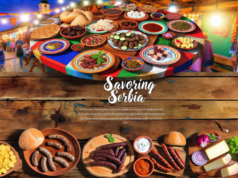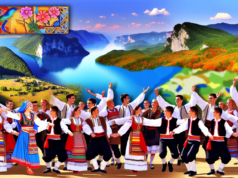
The Wine Trail: Discovering Serbia’s Hidden Vineyards and Wineries
Nestled in the heart of the Balkan Peninsula, Serbia is a country that often flies under the radar for travelers seeking culinary experiences. However, as the world begins to appreciate Serbia’s rich history, vibrant culture, and natural beauty, the country’s burgeoning wine scene is also coming into the spotlight. For oenophiles and casual wine enthusiasts alike, exploring Serbia’s hidden vineyards and wineries offers a delightful journey through the flavors, aromas, and landscapes that define this enchanting destination.
A Historical Context of Serbian Winemaking
Serbia’s wine-making tradition dates back to ancient times, with evidence suggesting that grapes were cultivated in the region as far back as 3000 BC. The fertile soils and varying climates throughout the country have contributed to a diverse array of grape varieties and wine styles. While the country was long overshadowed by its neighboring wine-producing nations such as Italy and France, Serbia’s wine industry is experiencing a revival, driven by a new generation of passionate winemakers keen on revitalizing historical practices and showcasing local grapes.
Unique Terroirs of Serbia
Serbia boasts several distinct wine-growing regions, each with its own unique terroir. Whether it’s the warm, sunny days and cool nights of the central region or the river valleys that lend a special character to the grapes, there’s a variety to suit every palate. Some of the most notable regions include:
-
Vojvodina: Located in northern Serbia, the Vojvodina region is one of the country’s largest wine-producing areas. With its flat plains and fertile soils, it is particularly well-suited for producing both white and red wines. The famous Grašac grape, a local white grape variety, is known for its crisp acidity and fruity notes.
-
Sumadija: Often regarded as the heart of Serbia, this region is famous for its rolling hills and diverse grape varieties. The region is known for producing robust red wines, particularly those made from the Prokupac grape—a variety indigenous to Serbia.
-
Toplica District: This lesser-known area in southern Serbia is gaining recognition for its unique microclimate and diverse range of grape varieties. It is home to several small, family-owned wineries that prioritize organic and sustainable practices.
- Specialty Regions: Smaller wine regions such as the Knjaževac and Rača also offer hidden treasures for wine enthusiasts, featuring rare varietals and a focus on traditional winemaking methods.
Notable Wineries to Visit
Traveling along Serbia’s wine trail is a rewarding experience, and several wineries showcase the country’s incredible wine culture.
-
Vinarija Aleksandrović: Located in the heart of Sumadija, this modern winery has garnered numerous awards for its premium wines. Visitors can participate in tastings while taking in stunning vineyard views.
-
Vinarija Jelić: Situated in Vojvodina, this winery is known for its organic practices and dedication to traditional winemaking. Their boutique offerings include small-batch wines that reflect the essence of the region.
-
Vinarija Djuric: Located in the Knjaževac region, the Djuric family has been producing wine for generations. Known for their Prokupac wines, visitors can indulge in intimate tastings paired with local delicacies.
- Vinarija Cuca: Established in 2003, with vineyards located in the Sumadija region, Cuca focuses on both tradition and innovation, producing thoughtfully crafted wines that have begun to gain international recognition.
The Wine Trail Experience
Exploring Serbia’s wine country is not just about the wine. The experience embraces the local culture, delicious cuisine, and exquisite landscapes. Many wineries offer guided tours that include vineyard walks, insights into the winemaking process, and tastings tailored to highlight regional specialties.
Visitors can also savor traditional Serbian cuisine, with dishes like ćevapi (grilled minced meat) and sarma (cabbage rolls) perfectly complementing the local wines. For those looking for a more immersive experience, many wineries offer accommodations or partnerships with nearby agrotourism farms, allowing guests to stay amidst the vines.
Conclusion
As Serbia continues to gain recognition on the global wine stage, a journey along the wine trail reveals a treasure trove of hidden vineyards and passionate winemakers. In recent years, the country’s wines, characterized by their unique flavors and organic practices, have attracted attention from international wine critics and enthusiasts alike.
Whether you’re a seasoned sommelier or just beginning your wine journey, Serbia’s wineries offer not only exceptional wines but also a glimpse into a vibrant culture rich in history and tradition. So pack your bags, embark on the wine trail, and discover the hidden gems of Serbia—your palate will thank you!













